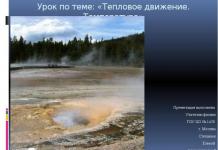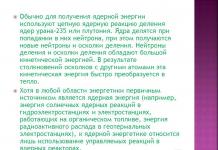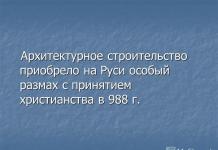LECTURE 3 ACOUSTICS. SOUND
1. Sound, types of sound.
2. Physical characteristics of sound.
3. Characteristics of auditory sensation. Sound measurements.
4. Passage of sound across the interface.
5. Sound research methods.
6. Factors determining noise prevention. Noise protection.
7. Basic concepts and formulas. Tables.
8. Tasks.
Acoustics. In a broad sense, it is a branch of physics that studies elastic waves from the lowest frequencies to the highest. In a narrow sense, it is the study of sound.
3.1. Sound, types of sound
Sound in a broad sense is elastic vibrations and waves propagating in gaseous, liquid and solid substances; in a narrow sense, a phenomenon subjectively perceived by the hearing organs of humans and animals.
Normally, the human ear hears sound in the frequency range from 16 Hz to 20 kHz. However, with age, the upper limit of this range decreases:
Sound with a frequency below 16-20 Hz is called infrasound, above 20 kHz -ultrasound, and the highest frequency elastic waves in the range from 10 9 to 10 12 Hz - hypersound.
Sounds found in nature are divided into several types.
Tone - it is a sound that is a periodic process. The main characteristic of tone is frequency. Simple tone created by a body vibrating according to a harmonic law (for example, a tuning fork). Complex tone is created by periodic oscillations that are not harmonic (for example, the sound of a musical instrument, the sound created by the human speech apparatus).
Noise is a sound that has a complex, non-repeating time dependence and is a combination of randomly changing complex tones (the rustling of leaves).
Sonic boom- this is a short-term sound impact (clap, explosion, blow, thunder).
A complex tone, as a periodic process, can be represented as a sum of simple tones (decomposed into component tones). This decomposition is called spectrum.
Acoustic tone spectrum is the totality of all its frequencies with an indication of their relative intensities or amplitudes.
The lowest frequency in the spectrum (ν) corresponds to the fundamental tone, and the remaining frequencies are called overtones or harmonics. Overtones have frequencies that are multiples of the fundamental frequency: 2ν, 3ν, 4ν, ...
Typically, the largest amplitude of the spectrum corresponds to the fundamental tone. It is this that is perceived by the ear as the pitch of the sound (see below). Overtones create the “color” of the sound. Sounds of the same pitch created by different instruments are perceived differently by the ear precisely because of the different relationships between the amplitudes of the overtones. Figure 3.1 shows the spectra of the same note (ν = 100 Hz) played on a piano and a clarinet.
 Rice. 3.1. Spectra of piano (a) and clarinet (b) notes
Rice. 3.1. Spectra of piano (a) and clarinet (b) notes
The acoustic spectrum of noise is continuous.
3.2. Physical characteristics of sound
1. Speed(v). Sound travels in any medium except vacuum. The speed of its propagation depends on the elasticity, density and temperature of the medium, but does not depend on the frequency of oscillations. The speed of sound in a gas depends on its molar mass (M) and absolute temperature (T):
 The speed of sound in water is 1500 m/s; The speed of sound in the soft tissues of the body is of similar importance.
The speed of sound in water is 1500 m/s; The speed of sound in the soft tissues of the body is of similar importance.
2. Sound pressure. The propagation of sound is accompanied by a change in pressure in the medium (Fig. 3.2).
 Rice. 3.2. Change in pressure in a medium during sound propagation.
Rice. 3.2. Change in pressure in a medium during sound propagation.
It is changes in pressure that cause vibrations of the eardrum, which determine the beginning of such a complex process as the occurrence of auditory sensations.
Sound pressure (ΔΡ) - this is the amplitude of those changes in pressure in the medium that occur during the passage of a sound wave.
3. Sound intensity(I). The propagation of a sound wave is accompanied by a transfer of energy.
Sound intensity is the flux density of energy transferred by a sound wave(see formula 2.5).
In a homogeneous medium, the intensity of sound emitted in a given direction decreases with distance from the sound source. When using waveguides, it is possible to achieve an increase in intensity. A typical example of such a waveguide in living nature is the auricle.
The relationship between intensity (I) and sound pressure (ΔΡ) is expressed by the following formula:
where ρ is the density of the medium; v- the speed of sound in it.
The minimum values of sound pressure and sound intensity at which a person experiences auditory sensations are called threshold of hearing.
For the ear of an average person at a frequency of 1 kHz, the hearing threshold corresponds to the following values of sound pressure (ΔΡ 0) and sound intensity (I 0):
ΔΡ 0 = 3x10 -5 Pa (≈ 2x10 -7 mm Hg); I 0 = 10 -12 W/m2.
The values of sound pressure and sound intensity at which a person experiences severe pain are called pain threshold.
For the ear of an average person at a frequency of 1 kHz, the pain threshold corresponds to the following values of sound pressure (ΔΡ m) and sound intensity (I m):
4. Intensity level(L). The ratio of intensities corresponding to the thresholds of audibility and pain is so high (I m / I 0 = 10 13) that in practice they use a logarithmic scale, introducing a special dimensionless characteristic - intensity level.
The intensity level is the decimal logarithm of the ratio of sound intensity to the hearing threshold:
The unit of intensity level is white(B).
Usually a smaller unit of intensity level is used - decibel(dB): 1 dB = 0.1 B. The intensity level in decibels is calculated using the following formulas:
Logarithmic nature of the dependence intensity level from herself intensity means that with increasing intensity 10 times intensity level increases by 10 dB.
Characteristics of frequently occurring sounds are given in Table. 3.1.
If a person hears sounds coming from one direction from several incoherent sources, then their intensities add up:
 High levels of sound intensity lead to irreversible changes in the hearing aid. Thus, a sound of 160 dB can cause a rupture of the eardrum and displacement of the auditory ossicles in the middle ear, which leads to irreversible deafness. At 140 dB, a person feels severe pain, and prolonged exposure to noise of 90-120 dB leads to damage to the auditory nerve.
High levels of sound intensity lead to irreversible changes in the hearing aid. Thus, a sound of 160 dB can cause a rupture of the eardrum and displacement of the auditory ossicles in the middle ear, which leads to irreversible deafness. At 140 dB, a person feels severe pain, and prolonged exposure to noise of 90-120 dB leads to damage to the auditory nerve.
Laboratory work No. 5
Audiometry
The student should know: what is called sound, the nature of sound, sources of sound; physical characteristics of sound (frequency, amplitude, speed, intensity, intensity level, pressure, acoustic spectrum); physiological characteristics of sound (height, volume, timbre, minimum and maximum vibration frequencies perceived by a given person, threshold of audibility, threshold of pain) their relationship with the physical characteristics of sound; human hearing system, theories of sound perception; sound insulation coefficient; acoustic impedance, absorption and reflection of sound, reflection and penetration coefficients of sound waves, reverberation; physical foundations of sound research methods in the clinic, the concept of audiometry.
The student must be able to: using a sound generator to remove the dependence of the hearing threshold on frequency; determine the minimum and maximum vibration frequencies you perceive, take an audiogram using an audiometer.
Brief theory
Sound. Physical characteristics of sound.
Sound are called mechanical waves with a frequency of vibration of particles of an elastic medium from 20 Hz to 20,000 Hz, perceived by the human ear.
Physical name those characteristics of sound that exist objectively. They are not related to the peculiarities of a person’s sensation of sound vibrations. The physical characteristics of sound include frequency, vibration amplitude, intensity, intensity level, speed of propagation of sound vibrations, sound pressure, acoustic spectrum of sound, reflection and penetration coefficients of sound vibrations, etc. Let us briefly consider them.
1. Oscillation frequency. The frequency of sound vibrations is the number of vibrations of particles of an elastic medium (in which sound vibrations propagate) per unit time. The frequency of sound vibrations lies in the range of 20 - 20000 Hz. Each individual perceives a certain range of frequencies (usually slightly above 20 Hz and below 20,000 Hz).
2. Amplitude sound vibration is the greatest deviation of the oscillating particles of the medium (in which the sound vibration propagates) from the equilibrium position.
3. Sound wave intensity(or the power of sound) is a physical quantity that is numerically equal to the ratio of the energy transferred by a sound wave per unit time through a unit surface area oriented perpendicular to the speed vector of the sound wave, that is:
Where W- wave energy, t- time of energy transfer through a platform area S.
Intensity unit: [ I] = 1 J/(m 2 s) = 1 W/m 2.
Let us pay attention to the fact that the energy and, accordingly, the intensity of the sound wave is directly proportional to the square of the amplitude " A" and frequencies " ω » sound vibrations:
W ~ A 2 And I ~ A 2 ; W ~ ω 2 And I ~ ω 2.
4. Speed of sound is called the speed of propagation of sound vibration energy. For a plane harmonic wave, the phase velocity (the speed of propagation of the oscillation phase (wave front), for example, maximum or minimum, i.e., a clot or rarefaction of the medium) is equal to the wave speed. For a complex oscillation (according to the Fourier theorem, it can be represented as a sum of harmonic oscillations), the concept is introduced group velocity– the speed of propagation of a group of waves with which energy is transferred by a given wave.
The speed of sound in any medium can be found using the formula:
Where E- modulus of elasticity of the medium (Young’s modulus), r- density of the medium.
With an increase in the density of the medium (for example, 2 times), the elastic modulus E increases to a greater extent (more than 2 times), therefore, with increasing density of the medium, the speed of sound increases. For example, the speed of sound in water is ≈ 1500 m/s, in steel - 8000 m/s.
For gases, formula (2) can be transformed and obtained in the following form:
 (3)
(3)
where g = S R /C V- the ratio of the molar or specific heat capacities of a gas at constant pressure ( S R) and at constant volume ( C V).
R- universal gas constant ( R=8.31 J/mol K);
T- absolute temperature on the Kelvin scale ( T=t o C+273);
M- molar mass of gas (for a normal mixture of air gases
M=29×10 -3 kg/mol).
For air at T=273K and normal atmospheric pressure, the speed of sound is υ=331.5 "332 m/s. It should be noted that wave intensity (vector quantity) is often expressed in terms of wave speed:
 or ,(4)
or ,(4)
Where S×l- volume, u=W/ S×l- volumetric energy density. The vector in equation (4) is called Umov vector.
5.Sound pressure is a physical quantity that is numerically equal to the ratio of the pressure force modulus F vibrating particles of the medium in which sound propagates to the area S perpendicular to the oriented area relative to the pressure force vector.
P = F/S [P]= 1N/m2 = 1Pa (5)
The intensity of a sound wave is directly proportional to the square of the sound pressure:
I = P 2 /(2r υ), (7)
Where R- sound pressure, r- density of the medium, υ - speed of sound in a given environment.
6.Intensity level. The intensity level (sound intensity level) is a physical quantity that is numerically equal to:
L=lg(I/I 0), (8)
Where I- sound intensity, I 0 =10 -12 W/m 2- the lowest intensity perceived by the human ear at a frequency of 1000 Hz.
Intensity level L, based on formula (8), is measured in bels ( B). L = 1 B, If I=10I 0.
Maximum intensity perceived by the human ear I max =10 W/m 2, i.e. I max / I 0 =10 13 or L max =13 B.
More often the intensity level is measured in decibels ( dB):
L dB =10 log(I/I 0), L=1 dB at I=1.26I 0.
The sound intensity level can be found through sound pressure.
Because I ~ P 2, That L(dB) = 10log(I/I 0) = 10 log(P/P 0) 2 = 20 log(P/P 0), Where P 0 = 2 × 10 -5 Pa (at I 0 = 10 -12 W/m 2).
7.tone is called sound, which is a periodic process (periodic oscillations of a sound source do not necessarily occur according to a harmonic law). If the sound source performs a harmonic oscillation x=ASinωt, then this sound is called simple or clean tone. A non-harmonic periodic oscillation corresponds to a complex tone, which can be represented, according to Fournet’s theorem, as a set of simple tones with frequencies n about(root tone) and 2n o, 3n o etc., called overtones with corresponding amplitudes.
8.Acoustic spectrum sound is a set of harmonic vibrations with corresponding frequencies and vibration amplitudes into which a given complex tone can be decomposed. The spectrum of a complex tone is lined, i.e. frequencies n o, 2n o etc.
9. Noise( audible noise ) called sound, which is complex, non-repeating vibrations of particles of an elastic medium. Noise is a combination of randomly changing complex tones. The acoustic spectrum of noise consists of almost any frequency in the audio range, i.e. the acoustic spectrum of noise is continuous.
The sound can also be in the form of a sonic boom. Sonic boom- this is a short-term (usually intense) sound impact (clap, explosion, etc.).
10.Sound wave penetration and reflection coefficients. An important characteristic of the medium that determines the reflection and penetration of sound is wave impedance (acoustic impedance) Z=r υ, Where r- density of the medium, υ - speed of sound in the medium.
If a plane wave is incident, for example, normally to the interface between two media, then the sound partially passes into the second medium, and part of the sound is reflected. If the sound intensity falls I 1, passes - I 2, reflected I 3 =I 1 - I 2, That:
1) sound wave penetration coefficient b called b=I 2 /I 1;
2) reflection coefficient a called:
a= I 3 /I 1 =(I 1 -I 2)/I 1 =1-I 2 /I 1 =1-b.
Rayleigh showed that b = 
If υ 1 r 1 = υ 2 r 2, That b=1(maximum value), while a=0, i.e. there is no reflected wave.
If Z 2 >>Z 1 or υ 2 r 2 >> υ 1 r 1 , That b » 4 υ 1 r 1 / υ 2 r 2. So, for example, if sound falls from air into water, then b=4(440/1440000)=0.00122 or 0,122% intensity of the incident sound penetrates from the air into the water.
11. The concept of reverberation. What is reverberation? In an enclosed space, sound is repeatedly reflected from the ceiling, walls, floor, etc. with gradually decreasing intensity. Therefore, after the cessation of the sound source, sound is heard for some time due to multiple reflections (hum).
Reverberation is the process of gradual attenuation of sound in enclosed spaces after the cessation of radiation from the source of sound waves. Reverberation time is the time during which the intensity of sound during reverberation decreases by 10 6 times. When designing classrooms, concert halls, etc. take into account the need to obtain a certain time (time interval) of reverberation. So, for example, for the Column Hall of the House of Unions and the Bolshoi Theater in Moscow, the reverberation time for empty rooms is respectively 4.55 s and 2.05 s, for filled rooms – 1.70 s and 1.55 s.
Goals:
- Introduce the concept of sound vibrations, find out the characteristics and properties of sound vibrations.
- Show the unity of nature, the relationship of physics, biology, music.
- Cultivating a caring attitude towards your health.
Equipment: a computer with a multimedia projector, a tuning fork, a ruler clamped in a vice, a sound generator.
Lesson plan.
- Org. Moment
- Learning new material.
- House. Exercise.
Man lives in a world of sounds. What is sound? How does it arise? How does one sound differ from another? Today in the lesson we will try to answer these and many other questions related to sound phenomena.
The branch of physics that studies sound phenomena is called acoustics.
Elastic waves that can cause auditory sensations in humans are called sound waves.
The human ear is capable of perceiving mechanical vibrations occurring with a frequency of 20 to 20,000 Hz. (Demonstration on a sound wave generator with a frequency from 20 to 20000 Hz)
Anything that vibrates at an audio frequency is a source of sound. But not only oscillating bodies can be sources of sound: the flight of a bullet in the air is accompanied by a whistle, the rapid flow of water is accompanied by noise.
The very fact of isolating from a fairly large set of frequencies, called sound, is associated with the ability of human hearing to perceive precisely these waves.
Different living beings have different boundaries for the perception of sound.
All sound sources can be divided into natural and artificial.
(demonstrations: the sound of a tuning fork and a ruler clamped between a vice.)
Let's consider the properties of sound.
- Sound is a longitudinal wave.
- Sound propagates in elastic media (air, water, various metals)
- Sound has a finite speed.
| Substance | Temperature 0 C | Speed of sound m/s | Substance | Temperature 0 C | Speed of sound m/s |
| Nitrogen | 300 | 487 | Water vapor | 100 | 405 |
| Nitrogen | 0 | 334 | Helium | 0 | 965 |
| Liquid nitrogen | -199 | 962 | Graphite | 20 | 1470 |
| Aluminum | 20 | 18 350 | Gold | 20 | 3200 |
| Diamond | 20 | 6260 | Mercury | 20 | 1450 |
| Petrol | 17 | 1170 | Alcohol | 20 | 1180 |
| Water | 20 | 1483 | Alcohol vapor | 0 | 230 |
| Water | 74 | 1555 | Steel | 20 | 5000-6100 |
| Ice | -1-4 | 3980 | Ether | 25 | 985 |
Let's listen to a message about how the speed of sound in water and other substances was determined.
(Student message)
Check yourself.
- The clock is set by the sound of a signal from a remote radio receiver. In which case will the clock be set more accurately: in summer or winter?
(In summer, since the speed of sound in air increases with temperature) - Can astronauts communicate with each other using audio speech during spacewalks?
(At a distance, no, because in the vacuum of space there are no conditions for the propagation of sound waves. However, if the astronauts touch their spacesuit helmets, they can hear each other.) - Why do power poles hum when there is wind?
(When there is wind, the wires perform chaotic oscillatory movements, affecting insulators mounted on poles. Standing sound waves are excited in the poles.)
Sound characteristics.
- Sound volume.
- Pitch
- Timbre of sound.
Sound volume is a characteristic of the amplitude of a sound wave.
(show experiment with tuning fork and generator)
The volume of sound depends on the amplitude of the vibrations: the greater the amplitude, the louder the sound.
But if we compared sounds of different frequencies, then in addition to amplitude we would also have to compare their frequencies. With the same amplitudes, we perceive as louder frequencies that lie in the range from 1000 to 5000 Hz.
The unit of sound volume is called dream.
In practical problems, the volume of sound is usually characterized by volume level, measured in backgrounds, or sound pressure level, measured in belah(B) or decibels(dB), constituting a tenth of a white.
Quiet whisper, rustling leaves - 20 dB
Normal speech - 60 dB
Rock concert - 120 dB
When the volume increases by 10 dB, the sound intensity increases 10 times.
Task: Calculate how many times the sound intensity at a rock concert is greater than normal speech?
(1000000 times)
A volume of 120 dB is called the pain threshold. With prolonged exposure to such sound, irreversible hearing loss occurs: a person accustomed to rock concerts will never hear a quiet whisper or rustle of leaves.
Height sound - a characteristic of the frequency of a sound wave; the higher the vibration frequency of the sound source, the higher the sound it produces.
Who flaps its wings faster in flight - a fly, a bumblebee or a mosquito?
Frequency of oscillations of the wings of insects and birds in flight, Hz
| Storks | 2 |
| Cabbage butterflies | until 9 |
| Sparrows | up to 13 |
| Crows | 3-4 |
| May beetles | 45 |
| Hummingbird | 35-50 |
| Mosquitoes | 500-600 |
| House flies | 190-330 |
| Bees | 200-250 |
| Bumblebee | 220 |
| Horseflies | 100 |
| Dragonflies | 38-100 |
Which birds and insects do we hear and which ones do we not?
Which insect has the highest sound? (At the mosquito)
The frequency of sound vibrations corresponding to the human voice ranges from 80 to 1400 Hz.
When the frequency is doubled, the sound rises by an octave - it is for these reasons that the octave was chosen. Each octave is divided into 12 intervals of half a tone each.
Timbre sound is determined by the shape of sound vibrations.
We know that the branches of a tuning fork perform harmonic (sinusoidal) oscillations. Such oscillations have only one strictly defined frequency. Harmonic vibrations are the simplest type of vibration. The sound of a tuning fork is in a clear tone.
In a clear tone is the sound of a source that performs harmonic oscillations of the same frequency.
Sounds from other sources (for example, the sounds of various musical instruments, people's voices, the sound of a siren and many others) represent a set of harmonic vibrations of different frequencies, i.e. a set of pure tones.
The lowest (i.e. smallest) frequency of such a complex sound is called fundamental frequency, and the corresponding sound of a certain height is main tone(sometimes simply called tone). The pitch of a complex sound is determined precisely by the pitch of its fundamental tone.
All other tones of a complex sound are called overtones. The frequencies of all overtones of a given sound are an integer number of times greater than the frequency of its fundamental tone (therefore they are also called higher harmonic tones).
Overtones determine the timbre of a sound, that is, its quality that allows us to distinguish the sounds of some sources from the sounds of others. For example, we easily distinguish the sound of a piano from the sound of a violin, even if these sounds have the same pitch, i.e. the same fundamental frequency. The difference between these sounds is due to a different set of overtones (the set of overtones from different sources may differ in the number of overtones, their amplitudes, the phase shift between them, and the frequency spectrum).
Check yourself.
- How can you tell by the sound whether a drill is running idle or under load?
- How are musical sounds different from noise?
(Noise differs from a musical tone in that it does not correspond to any specific pitch. Noise contains vibrations of all possible frequencies and amplitudes.) - The projection of the velocity of one of the points on the sounding cello string changes over time as shown in the graph. Determine the oscillation frequency of the velocity projection.

A person has such a unique organ as the ear - a sound receiver. Let's look at how a person hears.
Sound waves traveling through the air travel a complex path before we perceive them. First, they penetrate the auricle and cause the eardrum, which closes the external auditory canal, to vibrate. The auditory ossicles carry these vibrations to the oval window of the inner ear. The film that covers the window transmits vibrations to the liquid that fills the cochlea. Finally the vibrations reach the auditory cells of the inner ear. The brain perceives these signals and recognizes noises, sounds, music, and speech.
One of the most important characteristics of a voice is its timbre, i.e. a set of spectral lines, among which one can distinguish peaks consisting of several overtones - the so-called formants. It is the formants that determine the secret of the individual sound of the voice and make it possible to recognize speech sounds, since in different people the formants of even the same sound differ in frequency, width and intensity. The timbre of the voice is strictly individual, since in the process of sound formation an important role is played by the resonator cavities of the pharynx, nose, paranasal sinuses, etc., specific to each individual. The uniqueness of the human voice can only be compared to the uniqueness of the fingerprint pattern. In many countries around the world, a tape recording of a human voice is considered an indisputable legal document that cannot be forged.
The spectrum of singers' voices differs from the spectrum of the voice of an ordinary person: they have a highly expressed high singing formant, i.e. overtones with frequencies of 2500-3000 Hz, giving the voice a ringing tone. For outstanding singers, they constitute up to 35 percent or more in the spectrum (Fig. on the left), while among experienced singers - 15-30%, and among beginners - 3-5% (Fig., on the right).
It is customary to distinguish three types of voices for both sexes: for men - bass, baritone, tenor; for women - alto, mezzo-soprano and soprano. This division is largely artificial: it does not take into account a large number of “intermediate” voices, since there is no objective method for assessing the quality of a voice due to the unlimited combination of its properties.

When considering sound vibrations, one cannot help but pay attention to the effect of noise on the human body.
Long-term exposure to noise leads to damage to the central nervous system, increased blood and intracranial pressure, disruption of normal heart function, and dizziness. The harmful effects of loud noise on humans have been noticed for a long time. As far back as 2,000 years ago in China, prisoners were subjected to continuous exposure to the sounds of flutes, drums and screamers until they dropped dead as punishment. At a noise power of 3 kW and a frequency of 800 Hz, the ability of the eye to focus is impaired. A noise power of 5-8 kW disrupts the functioning of skeletal muscles, causes paralysis and memory loss. Noise power of about 200 kW leads to death. Therefore, in large cities the use of sharp and loud signals is prohibited. Trees and shrubs that absorb them significantly reduce noise. Therefore, green spaces are needed along roads with heavy traffic. Silence significantly improves hearing acuity.
D/Z §34-38 ex. 31(1), exercise 32 (2,3) practical task: determining the dependence of pitch on vibration frequency, using a piece of rubber thread.
I would like to end the lesson with these words. N. Roerich has a painting he called “Human Forefathers”. A young shepherd boy plays the flute, and large brown bears converge on him from all sides. What attracts them? Music? Legend says that the ancestors of some Slavic tribes were bears. It seems that they are going to hear the most wonderful music in the world - the voice of a kind human heart.
Literature:
- A. V. Peryshkin, E. M. Gutnik Physics 9th grade Bustard 2003
- S. V. Gromov, N. A. Rodina Physics 8th grade M. Education 2001
- V. N. Moshchansky Physics 9th grade M. Education 1994
- A.V. Aganov, R.K. Safiullin, A.I. Skvortsov, D.A. Tayursky Physics around us. Qualitative problems in physics.M. House of Pedagogy 1998
- S. A. Chandaeva Physics and man.M. JSC Aspect Press 1994
- Natural science at school No. 1 2004
Send your good work in the knowledge base is simple. Use the form below
Students, graduate students, young scientists who use the knowledge base in their studies and work will be very grateful to you.
Posted on http://www.allbest.ru/
STATE COMMITTEE OF COMMUNICATIONS, INFORMATION AND TELECOMMUNICATION TECHNOLOGIES OF THE REPUBLIC OF UZBEKISTAN
TASHKENT UNIVERSITY OF INFORMATION TECHNOLOGY
FACULTY OF TELEVISION TECHNOLOGIES
subject: Fundamentals of Physics
on the topic: Physical parameters of sound
Prepared by:
Shishkov Dmitry
Tashkent, 2015
Introduction
2.1 Speed of sound
3. Doppler effect
4. Ultrasound
5. Infrasound
Conclusion
Introduction
We live in a world of information, and the main part of it passes through the eyes and ears of a person. According to research by physiologists, visual information takes first place, but auditory information is no less important.
We live in a world of sounds, this includes music and noises of different nature, and speech, and music. Therefore, you need to know the nature of sound, the equations and laws that describe its propagation and absorption in various media. People of various professions need to know this: musicians and builders, sound engineers and architects, biologists and geologists, seismologists, and the military. They all deal with different aspects of the practical propagation of sound in different media.
The propagation of sound in rooms, the “sounding” of rooms is important for builders and musicians. Biologists are now studying the migration routes of migratory birds using sound signals, and fishermen are finding schools of fish in the ocean. Geologists use ultrasound to explore the earth's crust in search of new mineral deposits. Seismologists, by studying the propagation of sounds in the earth, learn to predict earthquakes and tsunamis. For the military, the profile of the hulls of warships and submarines is of great importance, because this affects the speed of the ship and the noise it makes, which for submarines should be minimal, and all this determines the relevance of my work. The development of physics and mathematics has made it possible to calculate all this. Therefore, sound phenomena were separated into a separate science, which was called acoustics.
The purpose of my work is to consider the basic laws and rules of sound propagation in various media, the types of sound vibrations and their application in science and technology.
1. The nature of sound and ultrasonic waves
First, let's look at the nature of sound vibrations. As is known from physics, the source of any vibrations: sound, electromagnetic, is a wave. Elastic waves that propagate in continuous media are called sound waves.
Sound waves include waves whose frequencies lie within the range of perception by the organs of hearing. A person perceives sounds when waves with frequencies from 16 to 20,000 Hz act on his hearing organs. Elastic waves whose frequency is less than 16 Hz are called infrasonic, and waves whose frequency lies in the range from 2 H 104 to 1 H 109 Hz are called ultrasonic.
The branch of physics in which sound waves are studied (their excitation, propagation, perception and interaction with obstacles and matter in the environment) is called acoustics.
Any oscillatory process is described by the equation. It is also derived for sound vibrations:
The development of technology has also made it possible to carry out visual observation of sound. To do this, they use special sensors and microphones and observe sound vibrations on the oscilloscope screen.
2. Basic characteristics of sound waves
2.1 Speed of sound
The main characteristics of sound waves include the speed of sound, its intensity - these are the objective characteristics of sound waves, pitch, loudness are classified as subjective characteristics. Subjective characteristics depend to a large extent on the perception of the sound by a particular person, and not on the physical characteristics of the sound.
Measurements of the speed of sound in solids, liquids and gases indicate that the speed does not depend on the frequency of vibration or the length of the sound wave, i.e., sound waves do not have dispersion. Longitudinal and transverse waves can propagate in solids, the speed of propagation of which is found using the formulas:
where E is Young's modulus, G is shear modulus in solids. In solids, the speed of propagation of longitudinal waves is almost twice as large as the speed of propagation of transverse waves.
Only longitudinal waves can propagate in liquids and gases. The speed of sound in water is found using the formula:
K is the bulk modulus of the substance.
In liquids, as the temperature increases, the speed of sound increases, which is associated with a decrease in the volumetric compression ratio of the liquid.
For gases, a formula has been derived that relates their pressure to density:
I. Newton was the first to use this formula to find the speed of sound in gases. From the formula it is clear that the speed of sound propagation in gases does not depend on temperature, it also does not depend on pressure, since as pressure increases, the density of the gas also increases. The formula can also be given a more rational form: based on the Mendeleev-Clapeyron equation:
Then the speed of sound will be equal to:
The formula is called Newton's formula. The speed of sound in air calculated with its help is 280 m/s at 273K. The actual experimental speed is 330 m/s.
This result differs significantly from the theoretical one, and the reason for this was established by Laplace.
He showed that sound propagates adiabatically in air. Sound waves in gases travel so quickly that the created local changes in volume and pressure in the gas environment occur without heat exchange with the environment. Laplace derived an equation for finding the speed of sound in gases:
2.2 Propagation of sound waves
As sound waves propagate through the medium, they attenuate. The amplitude of vibrations of particles of the medium gradually decreases with increasing distance from the sound source.
One of the main reasons for the attenuation of waves is the action of internal friction forces on the particles of the medium. To overcome these forces, the mechanical energy of oscillatory motion, which is transferred by the wave, is continuously used. This energy turns into the energy of chaotic thermal movement of molecules and atoms of the environment. Since the wave energy is proportional to the square of the oscillation amplitude, as the waves propagate from the sound source, along with a decrease in the energy reserve of the oscillatory motion, the oscillation amplitude also decreases.
The propagation of sounds in the atmosphere is influenced by many factors: temperature at different altitudes, air flows. Echo is sound reflected from a surface. Sound waves can be reflected from solid surfaces, from layers of air in which the temperature is different from the temperature of neighboring layers.
3. Doppler effect
To compare the intensity L of sound or sound pressure, an intensity level is used. The intensity level is the logarithm of the ratio of two sound intensities multiplied by 10. The value of L is measured in decibels:
To indicate the absolute level of intensity, the standard hearing threshold I0 of the human ear at a frequency of 1000 Hz is introduced, in relation to which the intensity is indicated. The hearing threshold is:
The table shows the intensities of various natural and man-made sounds and their intensities.
Objective characteristics of sound. Any body that is in an elastic medium and vibrates at a sound frequency is a source of sound. Sound sources can be divided into two groups: sources that operate at natural frequencies, and sources that operate at forced frequencies. The first group includes sources in which sounds are created by vibrations of strings, tuning forks, and air columns in pipes. The second group of sound sources includes telephones. The ability of bodies to emit sound depends on the size of their surface. The larger the surface area of a body, the better it emits sound. Thus, a string or tuning fork stretched between two points creates a sound of rather low intensity. To enhance the sound intensity of strings and tuning forks, they are combined with resonator boxes, which have an inherent range of resonant frequencies. The sound of string and wind musical instruments is based on the formation of standing waves in the strings and air columns. The intensity of the sound created by a source depends not only on its characteristics, but also on the room in which the source is located. After the sound source stops, the diffuse sound does not suddenly disappear. This is due to sound waves bouncing off the walls of the room. The time during which the sound completely disappears after the source stops is called reverberation time. Conventionally, it is believed that the reverberation time is equal to the period of time during which the sound intensity will decrease by a million times.
Reverberation time is an important characteristic of the acoustic properties of concert halls, cinema halls, auditoriums, etc. With a long reverberation time, music sounds quite loud, but inexpressive. With a short reverberation time, music sounds weak and dull. Therefore, in each specific case, the most optimal acoustic characteristics of the premises are achieved.
Subjective characteristics of sound. A person perceives sounds that lie in the frequency range from 16 Hz to 20 kHz. The sensitivity of the human hearing organs to different frequencies is not the same. In order for a person to react to sound, it is necessary that its intensity be no less than a minimum value, which is called the hearing threshold. The hearing threshold is not the same for different frequencies. The human ear has the greatest sensitivity to vibrations with a frequency of 1 to 3 kHz. The hearing threshold for these frequencies is about J/m. sq. With. With a significant increase in sound intensity, the ear ceases to perceive vibrations as sound. Such vibrations cause a sensation of pain.
The highest sound intensity at which a person perceives vibrations as sound is called the pain threshold.
The pain threshold at the indicated frequencies corresponds to a sound intensity of 1 J/m. sq. With.
Sound as a physical phenomenon is characterized by frequency, intensity or sound pressure, a set of frequencies. These are objective sound characteristics. The human hearing organs perceive sound based on volume, pitch, and timbre. These characteristics are subjective.
A diagram that represents the frequency and intensity regions perceived by the human ear is called a hearing diagram. The physical concept of sound intensity corresponds to sound volume. Subjective sound loudness cannot be accurately quantified.
The pitch of a sound is determined by its frequency; the higher the frequency, the higher the pitch of the sound. The human hearing organs sense changes in frequency quite accurately. In the frequency range of 2 kHz, it can perceive two tones, the frequencies of which differ by 3-6 Hz. The timbre of a sound is determined by its spectral composition. Timbre is the shade of a complex sound that distinguishes two sounds of the same strength and height.
4. Ultrasound
As already noted, elastic waves, the frequencies of which lie in the range from 104 to 109 Hz, are called ultrasound. The entire frequency range of ultrasonic waves is conventionally divided into three subranges: ultrasonic waves of low (104-105 Hz), medium (105-107 Hz) and high frequencies (107-109 Hz). Due to their physical nature, ultrasonic waves are the same as sound waves of any length. However, due to higher frequencies, ultrasound has a number of specific features in its propagation. Due to the fact that the lengths of ultrasonic waves are quite small, the nature of their propagation is determined primarily by the molecular properties of the substance.
A characteristic feature of the propagation of ultrasound in polyatomic gases and liquids is the existence of wavelength intervals, within which the dependence of the phase velocity of wave propagation on their frequency is manifested, i.e., sound dispersion occurs. Significant ultrasound absorption also occurs in these wavelength ranges. Therefore, when it propagates in the air, it attenuates more significantly than sound waves. In liquids and solids (especially single crystals), the attenuation of ultrasound is much less. Therefore, the scope of application of medium and high frequency ultrasound lies mainly in liquid and solid media, and only low frequency ultrasound is used in air and gases.
Another feature of ultrasound is the ability to obtain high intensity even with relatively small vibration amplitudes, since at a certain amplitude the energy flux density is proportional to the square of the frequency.
Another important phenomenon that occurs in liquids during the passage of ultrasound is cavitation.
This is the receipt of short-term pressure pulses during the collapse of air bubbles.
To produce ultra sound waves, mechanical and electromechanical devices are used. Mechanical ones include air and liquid sirens and whistles. Many substances can generate ultrasound when placed in a high-frequency electric field, such substances include quartz, Rochelle salt, and barium titanate. Ultrasound is used in many fields of knowledge, science and technology. It is used to study the properties and structure of matter. With its help, they obtain information about the structure of the seabed, its depth, and find schools of fish in the ocean. Ultra sound waves can penetrate metal products about 10 meters thick. This property is the basis for the operating principle of an ultrasonic flaw detector, which helps to find defects and cracks in solids. In medicine, this property of ultrasound is the basis for the operation of ultrasound diagnostic devices, which make it possible to visualize internal organs and diagnose diseases in the early stages.
The action of ultrasonic vibrations directly on melts makes it possible to obtain a more uniform structure of metals. Ultrasonic cavitation is used to clean dirt from the surfaces of parts (watch production, instrument making, electronic equipment, etc.). Based on cavitation, metallization of bodies, soldering, and degassing of liquids are carried out. Cavitation shock waves can disperse solids and liquids to form emulsions and suspensions.
5. Infrasound
Infrasounds are elastic vibrations similar to sound vibrations, but with frequencies below 20 Hz. At first glance, infrasounds occupy a small frequency range from 20 to 0 Hz. In fact, this area is extremely large, since “towards zero” means an almost infinite range of fluctuations. This range is less studied compared to the sound and ultrasonic ranges. Infrasonic waves arise due to wind blowing on buildings, trees, telegraph poles, metal trusses, during the movement of people, animals, vehicles, during the operation of various mechanisms, during lightning discharges, bomb explosions, and gun shots. Oscillations and vibrations of infrasound frequencies are observed in the earth's crust due to landslides, the movement of various types of transport, volcanic eruptions, etc.
In other words, we live in a world of infrasounds without even knowing it. A person feels such sounds rather than smells them. Infrasounds can only be recorded with special devices. A characteristic feature of infrasound is its slight absorption in different environments. As a result, infrasound waves in air, water and the earth's crust can propagate over fairly large distances (tens of thousands of kilometers). In this regard, infrasound is figuratively called “acoustic neutrino”. Thus, infrasonic waves (oscillation frequency 0.1 Hz), which were formed during the eruption of the Krakatoa volcano (Indonesia) in 1883, circled the globe several times. They caused pressure fluctuations that could be recorded by ordinary barometers.
Some infrasounds are perceived by humans, but not with the organs of hearing, but with the body as a whole. The fact is that some internal human organs have their own resonant vibration frequency of 6-8 Hz. When exposed to infrasound of this frequency, a resonance of vibrations of these organs may occur, which causes unpleasant sensations.
Research by scientists from different countries has established that infrasound of any frequency and intensity poses a real threat to human health. The results obtained make it possible to conclude that infrasound leads to a loss of sensitivity in the body's balance organs, which in turn leads to pain in the ears, spine and brain damage. Infrasound has an even more detrimental effect on the human psyche. The property of ultrasonic vibrations to propagate over long distances in the earth's crust is the basis of seismology - a science that studies earthquakes and explores the internal structure of the Earth.
In addition to oceanology and seismology, infrasound is used in the operation of some instruments and mechanisms for various practical purposes. With the help of such devices, they try to predict earthquakes and the approach of a tsunami.
Conclusion
physical mechanical ultrasound
A person lives in an ocean of sound, he exchanges information using sound, perceives it from the people around him. Therefore, knowing the basic characteristics of sound, its subtypes and their use is simply necessary. The use of sound and ultra sound waves is increasingly used in human life. They are used in medicine and technology; many instruments are based on their use, especially for the study of seas and oceans. Where, due to the strong absorption of radio waves, sound and ultra sound vibrations are the only way to transmit information. As mentioned above, man lives in the ocean of sound and we also do not need to forget about the purity of this ocean. Loud noises are dangerous to human health and can lead to severe headaches and loss of coordination. Therefore, you need to respect such a complex and interesting phenomenon as sound.
List of used literature
1. Dushchenko V.P., Kucheruk I.M. General physics. - K.: Higher School, 1995. - 430 p.
2. Isakovich M.A. General acoustics. - M.: Nauka, 1973. - 495 p.
3. Zisman G.A., Todes O.M. Course of general physics. In 3 volumes - M.: Nauka, 1995. - 343 p.
4. Klyukin I.I. The amazing world of sound. - L.: Shipbuilding, 1978. - 166 p.
5. Kuhling H. Handbook of physics: Transl. with him. - M.: Mir, 1983. - 520 p.
6. Lependin L.F. Acoustics. - M.: Higher School, 1978. - 448 p.
7. Yavorsky B.M., Detlaf A.A. Handbook of Physics. - M.: Nauka, 1982. - 846 p.
8. Shebalin O.D. Physical foundations of mechanics and acoustics. - M.: Higher School, 1981. - 263 p.
Posted on Allbest.ru
...Similar documents
Sound waves and the nature of sound. Main characteristics of sound waves: speed, propagation, intensity. Characteristics of sound and sound sensations. Ultrasound and its use in technology and nature. The nature of infrasonic vibrations, their application.
abstract, added 06/04/2010
The nature of sound, physical characteristics and the basics of sound research methods in the clinic. A special case of mechanical vibrations and waves. Sonic boom and short-term sound impact. Sound measurements: ultrasound, infrasound, vibration and sensation.
abstract, added 11/09/2011
What is sound? Propagation of mechanical vibrations of the medium in space. Pitch and timbre of sound. Compression and rarefaction of air. Propagation of sound, sound waves. Reflection of sound, echo. Human sensitivity to sounds. The influence of sounds on humans.
abstract, added 05/13/2015
Propagation of sound waves in the atmosphere. Dependence of the speed of sound on temperature and humidity. Perception of sound waves by the human ear, frequency and sound intensity. The influence of wind on the speed of sound. A feature of infrasounds is the attenuation of sound in the atmosphere.
lecture, added 11/19/2010
Vibrations of particles in elastic media, propagating in the form of longitudinal waves, the frequency of which lies within the limits perceived by the ear. Objective, subjective characteristics of sound. Sound research methods in the clinic. Position of fingers during percussion.
presentation, added 05/28/2013
Parameters of elastic harmonic waves. Equations of plane and spherical waves. Standing wave equation. Wave propagation in a homogeneous isotropic medium and the principle of superposition. Intervals between adjacent antinodes. Speed of sound propagation.
presentation, added 04/18/2013
Types of waves and their distinctive features. Concept and study of parameters of elastic waves: equations of plane and spherical waves, Doppler effect. Essence and characteristics of standing waves. The phenomenon and conditions of wave superposition. Description of sound and standing waves.
presentation, added 09/24/2013
Study of the mechanism of the human ear. Definition of the concept and physical parameters of sound. Propagation of sound waves in air. Formula for calculating the speed of sound. Consideration of the Mach number as a characteristic of the dimensionless gas flow velocity.
abstract, added 04/18/2012
Sound as a source of information. Cause and sources of sound. The amplitude of vibrations in a sound wave. Necessary conditions for the propagation of sound waves. Duration of sounding of a tuning fork on a resonator and without it. Use of echolocation and ultrasound technology.
presentation, added 02/15/2011
The nature of sound and its sources. Basics of computer sound generation. Audio input/output devices. Sound intensity as an energy characteristic of sound vibrations. Sound speed distribution. Damped sound vibrations.
Key Sound Characteristics
Sound speed in air equals 332.5 m/s at 0°C. At room temperature (20°C) the speed of sound is about 340 m/s. The speed of sound is indicated by the symbol " With ».
Frequency. Sounds perceived by the human auditory analyzer form a range of sound frequencies. It is generally accepted that this range is limited to frequencies from 16 to 20,000 Hz. These limits are very arbitrary, which is associated with individual hearing characteristics, age-related changes in the sensitivity of the auditory analyzer (with age, the upper limit of audible frequencies drops to 14–16 kHz), etc. This is a fairly wide range, covering three decades (a frequency range with a ratio of maximum to minimum frequency equal to 10). From music, another measure of measuring the frequency range of sound vibrations came to us - the octave (the ratio of the extreme frequencies of the range is equal to 2).
The physical concept of sound covers both audible and inaudible vibration frequencies. Sound waves with a frequency below 16 Hz are conventionally called infrasonic, above 20 kHz - ultrasonic . Infrasonic and ultrasonic vibrations do not cause the sensation of sound in humans.
The region of infrasonic oscillations from below is practically unlimited - infrasonic oscillations with a frequency of tenths and hundredths of Hz occur in nature . Frequencies of the order of 20 Hz and below are not so much heard by the ear, but rather perceived by the body and even our internal organs. Moreover, when such frequencies approach the vibration frequencies of human internal organs, they can cause anxiety, a feeling of fear, euphoria, and, if the sound is strong enough, even lead to death. Let us note that in this case the person does not hear these sounds and is not aware of the reasons for the occurrence of these feelings.
There is a fairly well-founded opinion that ultrasonic vibrations still affect a person’s sensations when listening to music, since they have a noticeable effect on the shape of sound waves, and therefore the most advanced acoustic systems are capable of reproducing ultrasonic vibrations with frequencies up to 35–50 kHz , and sometimes higher.
Sound intensity(W/m2) is determined by the amount of energy transferred by a wave per unit time through a unit surface area perpendicular to the direction of wave propagation. The human ear perceives sound in a very wide range of intensity: from the weakest audible sounds to the loudest, for example, those created by a jet engine.
The minimum sound intensity at which the auditory sensation occurs is called auditory threshold. It depends on the frequency of sound (Fig. 124). The human ear is most sensitive to sound in the frequency range from 1 to 4 kHz; accordingly, the threshold of auditory perception here has the lowest value of 10–12 W/m2. This value is taken as the zero level of audibility. When exposed to noise and other sound stimuli, the hearing threshold for a given sound increases ( sound masking- a physiological phenomenon consisting in the fact that when two or more sounds of different volumes are simultaneously perceived, quieter sounds cease to be audible), and the increased value persists for some time after the cessation of the distractor, and then gradually returns to the original level. The hearing threshold may vary depending on the age, physiological state, and training of the listener.
Rice. 124. Frequency dependence of the standard hearing threshold of a sinusoidal signal
High intensity sounds cause a feeling of pressing pain in the ears. The minimum sound intensity at which a feeling of pressing pain in the ears occurs is usually called pain threshold. Just like the threshold of auditory perception, the threshold of pain depends on the frequency of sound vibrations (Fig. 124). Sounds whose intensity approaches the pain threshold have a harmful effect on hearing.
Normal sound perception is possible if the sound intensity is between the audibility threshold and the pain threshold.
The human auditory analyzer is capable of perceiving a huge dynamic range. The changes in air pressure caused by the quietest audible sounds are on the order of 2×10 –5 Pa. At the same time, sound pressure with a level approaching the threshold of pain for our ears is about 20 Pa. As a result, the dynamic range (the ratio between the quietest and loudest sounds that our hearing aid can perceive) is 1:1000000. It is inconvenient to measure signals of such different levels on a linear scale.
In order to compress such a wide dynamic range, the concept of “bel” was introduced. Bel is a simple logarithm of the ratio of two powers, and a decibel is equal to 0.1 bel.
To express acoustic pressure in decibels, it is critical to square the pressure (in pascals) and divide it by the square of the reference pressure. For convenience, squaring two pressures is done outside the logarithm (property of logarithms).
To convert acoustic pressure into decibels, the formula is used:
Where P is the acoustic pressure we are interested in, P 0 – initial pressure.
It is convenient to evaluate sound by level ( L) intensity (sound pressure), calculated by the formula:
Where J 0 – auditory threshold J- sound intensity (Table 10).
Table 10
Characteristics of sound assessment by intensity level relative to the threshold of auditory perception
| Sound Characteristics | Intensity, W/m 2 | Intensity level relative to the hearing threshold, dB |
| Auditory threshold | 10 –12 | |
| Heart sounds generated through a stethoscope | 10 –11 | |
| Whisper | 10 –10 –10 –9 | 20–30 |
| Speech sounds during a calm conversation | 10 –7 –10 –6 | 50–60 |
| Noise associated with heavy traffic | 10 –5 –10 –4 | 70–80 |
| Noise generated by a rock music concert | 10 –3 –10 –2 | 90–100 |
| Noise near a running aircraft engine | 0,1–1,0 | 110–120 |
| Pain threshold |
Let's imagine the relationship between decibels and the usual relative units of measurement of the noted parameters (data are given for TO= 20) (Table 11).


























